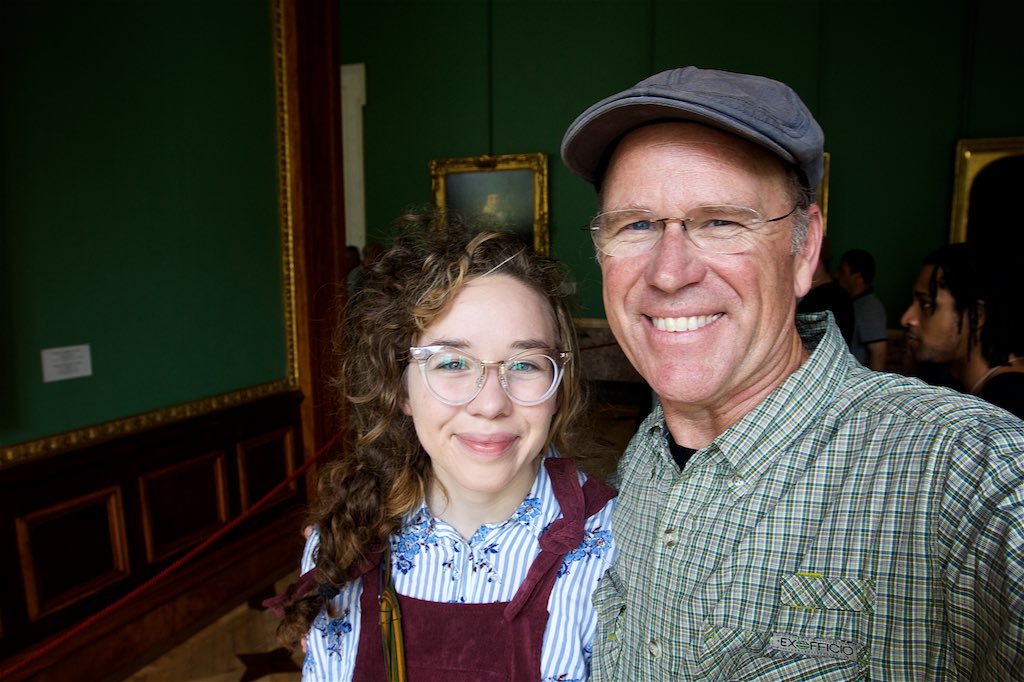
10 Nov Day 20 – At The Hermitage in Saint Petersburg, Russia

Carissa and I standing before Rembrandt’s The Prodigal Son
Day 20 of a 26 day, 11 flight and 4 country adventure, Capturing Grace in France, Ukraine, Russia and Spain.
Upon arrival to Saint Petersburg, Russia we were greeted at the airport by Natasha, the European director for the global ministry that I came to photograph for.
Our friendship with Natasha quickly solidified as she combined her talents gleaned from a masters in Russian history, extensive work in the travel industry along with her heart for ministering to orphans, to navigate our days together in Russia.
During our time in Saint Petersburg we toured The Hermitage, one of the worlds most renowned museums. Housing over four million exhibits, it would take seven years to see them all if you paused for one minute before each one.
Natasha’s experience allowed us to negotiate the highlights of this magnificent place and see the paintings that held the greatest significance and interest to myself.
Paintings by Raffaello Santi – Madonna and Child acquired from the Constabile collection in 1871
Antonio Canova’s sculture “Kiss of Cupid” entered into The Hermitage collection in 1926.
Leonardo da Vinci was one of the leading artists of the High Renaissance and Fifteen works are generally attributed either in whole or in large part to him. Of these The Hermitage possesses two of his masterpieces, The Madonna and Child (The Litta Madonna), entered into The Hermitage collection in 1865 as well as Da Vinci’s Madonna and the Child (The Benois Madonna) acquired by The Hermitage in 1914.
The Rembrandt room contains a unique collection of paintings by Rembrandt. The Hermitage’s Rembrandt collection includes 23 works, representing both the artist’s early and late periods among them are The Descent from the Cross, The Sacrifice of Abraham, Danaë, David and Jonathan, The Holy Family, Portrait of an Old Man in Red and The Return of the Prodigal Son).
Standing before Rembrandt’s The Descent from the Cross is a study in lighting and I was enthralled. The lighting of this image is very elaborate and strategized upon certain figures creating groupings of bystanders. The intensity of the light is highly varied. The lightest and brightest areas are on Jesus’ body, promoting it as the focal point of the piece, and the darkest area in the unlit, nearly black, inky background. Various torches and candles provide the light shed on the figures, as the scene takes place at night. The different types of candles and torches provide different intensities of light. Although varying in degree, light specifically illuminates, and delineates, three main groups. These groups are Jesus and the people carrying him, women laying out what appears to be a burial cloth, and Mary and her supporters. This strategic lighting seems to create a sort of order to the work, shedding light on what has happened, what will happen next, and the effect it has on others.
For years I have wanted to see in person what many regard as perhaps the greatest piece of art ever painted, The Return of the Prodigal Son.
The Return of the Prodigal Son is an oil painting by Rembrandt. It is among the Dutch master’s final works, likely completed within two years of his death in 1669. Depicting the moment of the prodigal son’s return to his father in the Biblical parable, it is a renowned work described by art historian Kenneth Clark as “a picture which those who have seen the original in St. Petersburg may be forgiven for claiming as the greatest picture ever painted”
In this painting, the son has returned home in a wretched state from travels in which he has wasted his inheritance and fallen into poverty and despair. He kneels before his father in repentance, wishing for forgiveness and a renewed place in the family, having realized that even his father’s servants had a better station in life than he. His father receives him with a tender gesture. His hands seem to suggest mothering and fathering at once; the left appears larger and more masculine, set on the son’s shoulder, while the right is softer and more receptive in gesture. Standing at the right is the prodigal son’s older brother, who crosses his hands in judgment; in the parable he objects to the father’s compassion for the sinful son:
But he answered his father, “Behold, these many years I have served you, and I never disobeyed a commandment of yours, but you never gave me a goat, that I might celebrate with my friends. But when this, your son, came, who has devoured your living with prostitutes, you killed the fattened calf for him.”
Luke 15:29–30
The father explains, “But it was appropriate to celebrate and be glad, for this, your brother, was dead, and is alive again. He was lost, and is found” (Luke 15:32).
Rembrandt was moved by the parable, and he made a variety of drawings, etchings, and paintings on the theme that spanned decades, beginning with a 1636 etching. The Return of the Prodigal Son includes figures not directly related to the parable but seen in some of these earlier works; their identities have been debated. The woman at top left, barely visible, is likely the mother, while the seated man, whose dress implies wealth, may be an advisor to the estate or a tax collector. The standing man at centre is likely the elder son.
For those that would like to study the parable of The Prodigal Son more in depth I highly recommend Tim Keller’s book, The Prodigal God.
In The Prodigal God, New York pastor Timothy Keller uses the story of the prodigal son to shine a light on the central, beautiful message of Jesus: the gospel of grace, hope and salvation. Keller argues that the parable of the prodigal son, while Jesus’ best-known parable, is also his least understood. He introduces the reader to all the characters in this timeless story, showing that it concerns not just a wayward son, but also a judgemental older brother and, most importantly, a loving father.This short but powerful book is a reminder to the faithful, an explanation to the seeker, and finally an invitation to all – both older and younger brothers – to enter in to the ‘unique, radical nature of the gospel’: the reckless, spendthrift love of God.
A couple of my favorite quotes from Pastor Tim’s book are … “If we say, ‘I believe in Jesus,’ but it doesn’t affect the way we live, the answer is not that now we need to add hard work to our faith so much as that we haven’t truly understood or believed in Jesus at all.”
“The targets of this story are not “wayward sinners” but religious people who do everything the Bible requires. Jesus is pleading not so much with immoral outsiders as with moral insiders. He wants to show them their blindness, narrowness, and self righteousness, and how these things are destroying both their own souls and the lives of the people around them.”
I hope that you enjoy these photographs of mine and Carissa’s time with Natasha at The Hermitage Museum today.
[Last month, my daughter Carissa and I set off on a 26 day, 11 flight and 4 country adventure, Capturing Grace with our camera’s as we journeyed through France, Ukraine, Russia and Spain. I am now back at home in the US, posting about the experience of those twenty six days from my journal]
- The Pavilion Hall – This mosaic is set into the floor – a copy of one found during excavations of ancient Roman thermae.
- Commissioned by Empress Catherine II in the late 1780s, the Raphael Loggias are the exact copy of the Gallery in the Papal Palace in Vatican City. The frescoes of the open loggias of the Papal Palace were painted after Raphael’s sketches. Their copies made in Italy by a group of artists under the supervision of Christopher Unterberger, took their place in the gallery of a separate building erected by Giacomo Quarenghi. The Loggias vaults are decorated with scenes from biblical stories, the walls are covered with paintings with ornamentation motifs, known as “grotesques”.
- Da Vinci’s Madonna and the Child (The Benois Madonna) acquired by The Hermitage in 1914.
- Rembrandt’s The Return of the Prodigal Son
- Paintings by Raffaello Santi – Madonna and Child acquired from the Constabile collection in 1871
- Da Vinci’s The Madonna and Child (The Litta Madonna), entered into The Hermitage collection in 1865
- Peter the Great’s memorial throne room at the Winter Palace / Hermitage Museum in St Petersburg (The Red Room)
- Rembrandt’s The Return of the Prodigal Son
- Rembrandt’s The Descent from the Cross
- Ambassador’s (Jordan) Staircase at the Winter Palace / Hermitage Museum
- The Rembrandt room
- Antonio Canova’s sculture “Kiss of Cupid” entered into The Hermitage collection in 1926.
- The Winter palace Hermitage museum
- Carissa standing with Natasha Votyakova whose wealth of Russian history knowledge was so beneficial as she took us on a tour of The Hermitage
- The Hermitage Museaum (Winter Palace) as seen from the Neva River
- Carissa and I standing before Rembrandt’s The Prodigal Son




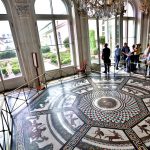


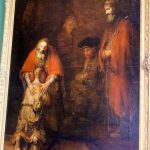
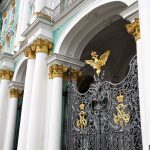

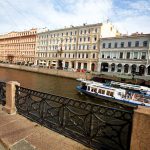
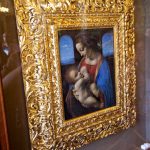

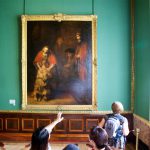
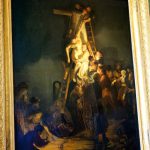
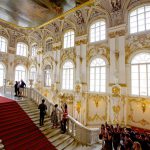
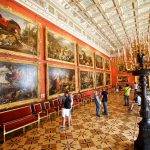
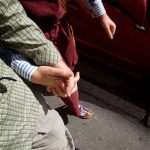
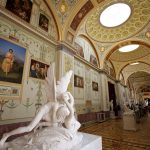
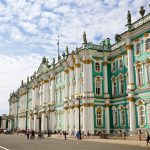
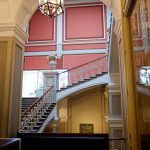
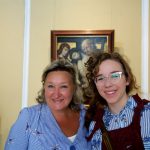
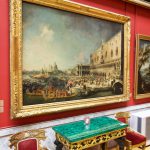
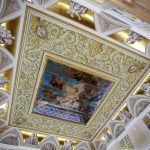
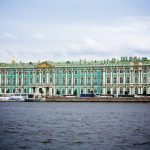
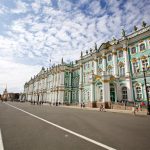

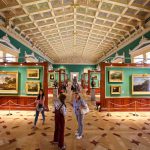
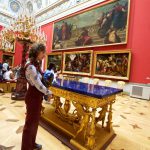
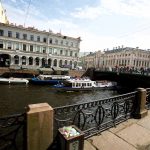

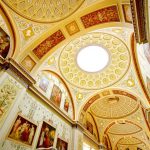
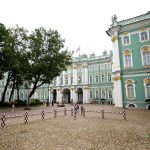
No Comments